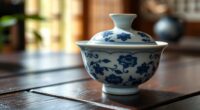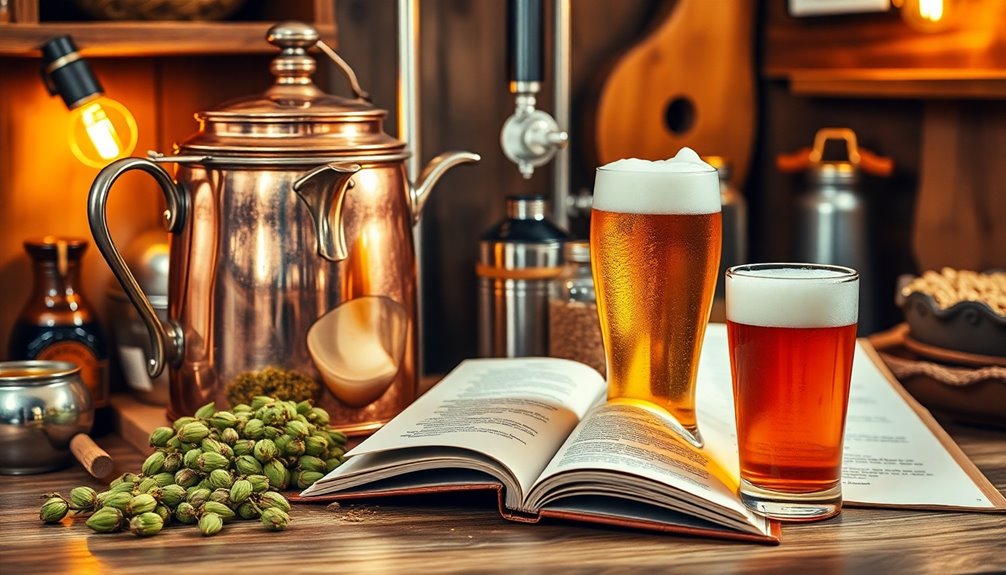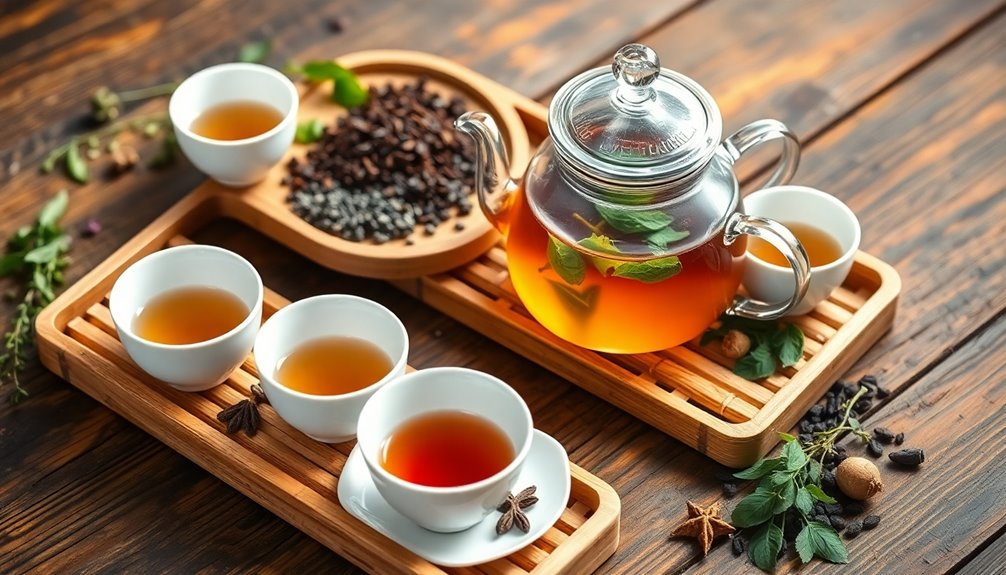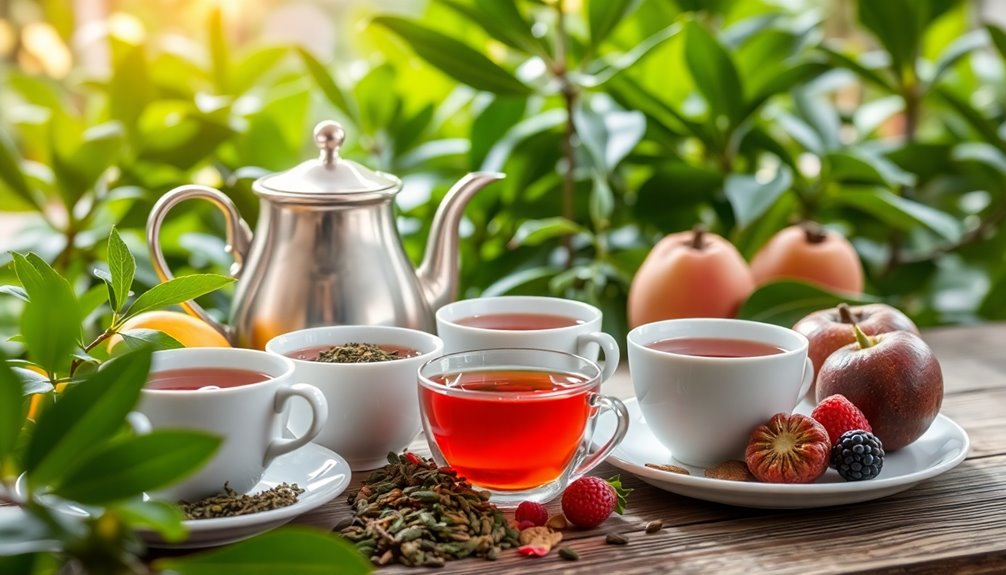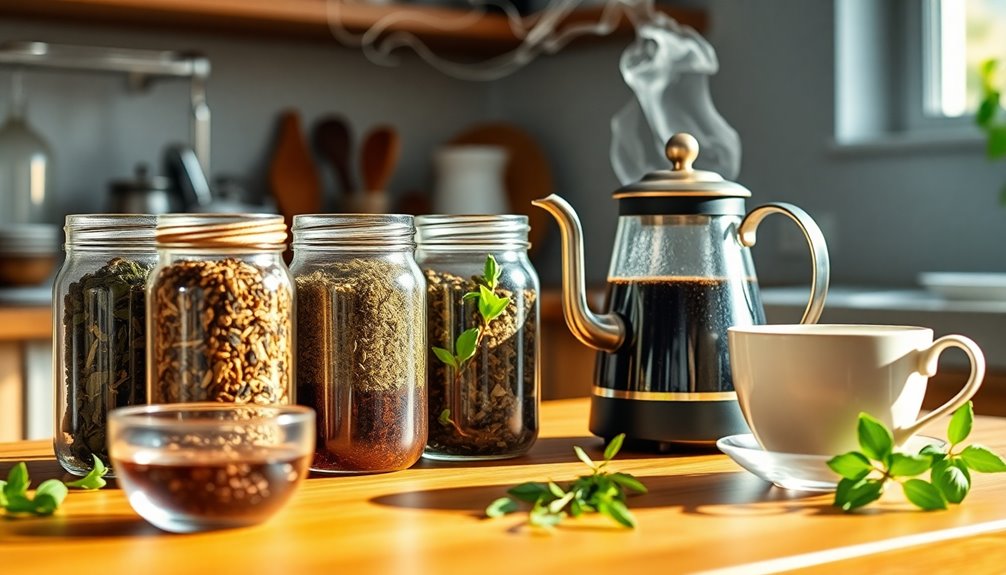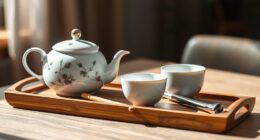To begin gongfu brewing at home, focus on controlling water temperature carefully for each tea type—about 175°F for green, 212°F for black. Use good accessories like small teapots, gaiwan, and a thermometer to improve your control and flavor. Measure tea leaves precisely, monitor steeping times, and adjust with each infusion to unearth complex flavors. As you shape your skills, you’ll discover how details like temperature and timing transform your tea experience, and there’s much more to explore beyond this.
Key Takeaways
- Use precise water temperatures: around 175°F for green tea and near boiling for black tea to optimize flavor.
- Prepare brewing accessories like small teapots or gaiwan, and preheat them with hot water for better infusion control.
- Measure 3-5 grams of tea leaves, and perform short initial infusions (20-30 seconds) to develop layered flavors.
- Keep a timer to manage steeping times, adjusting for subsequent infusions to reveal evolving aromas.
- Practice consistent temperature and timing, and appreciate multiple infusions to deepen your understanding of tea’s flavor profile.
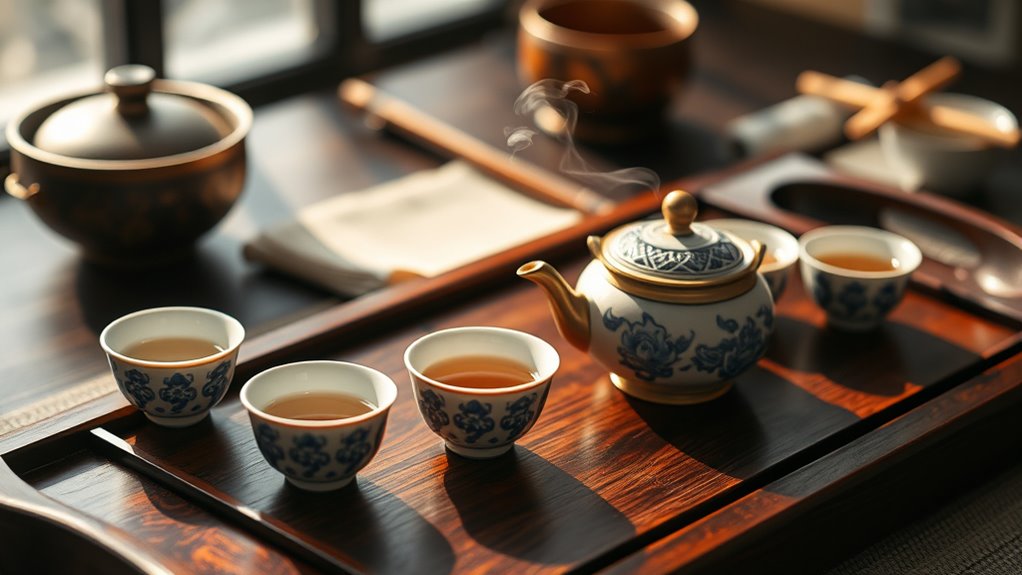
Brewing gongfu-style tea at home is a rewarding way to enjoy the nuanced flavors and aromas that traditional methods bring out. To get started, understanding the importance of tea temperature is essential, as it directly influences how the tea’s flavors develop. Different types of tea—green, oolong, black, or white—require specific temperatures to reveal their best qualities. For example, green teas often need water around 175°F (80°C), while black teas thrive at near boiling point, about 212°F (100°C). Using a reliable thermometer helps you maintain precise temperatures, guaranteeing each infusion is ideal. Investing in good brewing accessories, such as a small teapot, gaiwan, or yixing clay teapots, is equally vital. These tools not only facilitate the brewing process but also enhance the tea’s flavor by allowing better control over infusion times and temperature stability.
Once you’ve chosen your tea, set up your brewing accessories on a clean surface. Rinsing your teaware with hot water before brewing is a simple but important step—it warms the vessel and prepares it to better extract flavors. When it’s time to brew, measure out the right amount of tea leaves, typically about 3-5 grams for a small gaiwan or yixing pot. Pour your preheated water over the leaves, paying close attention to the tea temperature. Precise temperature control ensures you don’t under- or over-extract the leaves, which could result in a weak or bitter brew. The first infusion is usually shorter, around 20-30 seconds, to gently awaken the leaves and release initial flavors.
Additionally, understanding the significance of angel number meanings can deepen your appreciation of the subtle transformations that occur during brewing, similar to recognizing patterns or signs in angel numbers that guide love and personal growth. As you proceed through multiple infusions, adjust the brewing time accordingly—often adding a few seconds each round—while keeping the water temperature consistent with the type of tea. Using quality brewing accessories makes this process smoother; a good strainer or filter can prevent loose leaves from escaping into your cup. Also, having a timer helps keep track of steeping times, so you don’t accidentally overbrew. With each infusion, you’ll notice the flavors evolving—more floral, fruity, or earthy notes emerging—offering a richer experience with every pour. Over time, you’ll learn how different brewing accessories and precise control of tea temperature influence the final taste, making your gongfu brewing practice more refined and enjoyable.
Frequently Asked Questions
What Types of Tea Are Best for Gongfu Brewing?
When choosing tea varieties for gongfu brewing, opt for high-quality oolong, pu-erh, or black teas, as their complex flavors shine through this brewing style. These teas benefit from the multiple short steepings involved in traditional techniques. You’ll want teas with good leaf integrity and aroma, allowing you to fully explore their nuanced flavors. Experimenting with different varieties enhances your brewing skills and deepens your appreciation for the art of gongfu tea preparation.
Can I Brew Gongfu-Style Tea Without Traditional Equipment?
You can definitely explore alternative brewing methods if you don’t have traditional gongfu teaware. DIY teaware solutions like small cups, a French press, or even a durable jar can work in a pinch. While they might not replicate the exact experience, they still allow you to enjoy gongfu-style tea. Just remember, experimenting with different tools can enhance your brewing journey and help you discover personalized, enjoyable ways to prepare your favorite teas.
How Do I Clean and Maintain Gongfu Teaware?
To keep your gongfu teaware in top shape, focus on proper teaware preservation and cleaning techniques. Rinse your teapots and cups with warm water after each use, avoiding soap that can affect flavor. Use a soft brush or cloth to gently remove residue, and let everything air dry. Regular maintenance guarantees your teaware stays in good condition, enhancing your brewing experience and safeguarding the delicate flavors of your tea.
What Water Temperature Is Ideal for Different Teas?
Did you know that water temperature can make or break your tea’s flavor? For delicate green teas, aim for 150-180°F to preserve their freshness, while black teas thrive at 200-212°F for full extraction. Consider water mineral content and tea leaf quality—hard water can dull flavors, so use softer water for nuanced teas. Adjust temperatures based on these factors for the perfect brew every time.
How Long Should Each Steeping Cycle Last?
For ideal flavor extraction, you should keep each steeping duration between 20 to 30 seconds for delicate teas like green or white, and around 30 to 60 seconds for oolongs and black teas. Adjust the steeping cycle based on your taste preference; shorter times yield lighter flavors, while longer ones deepen the brew. Experiment to find your perfect balance, ensuring each steeping cycle enhances your tea’s aroma and richness.
Conclusion
Now that you’ve mastered the art of gongfu brewing at home, you’re ready to impress friends and family with your skillful tea mastery. Remember, even in this modern age, a good brew can feel like wielding a wizard’s staff—powerful and enchanting. So, keep experimenting, stay patient, and let each cup transport you to a time when tea was more than just a drink; it was an art form. Cheers to your brewing journey!


